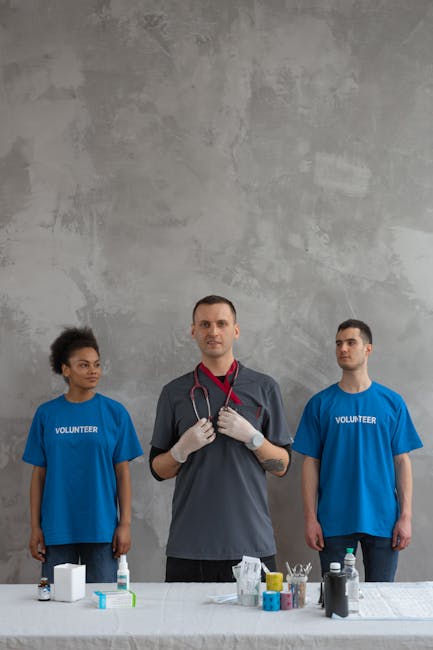Retaining Hygiene Staff with Better Training Programs
The Critical Link Between Training and Retention
Healthcare facilities constantly struggle with staff retention. Specifically, hygiene departments experience particularly high turnover rates. According to the American Hospital Association, inadequate training contributes significantly to early career dissatisfaction. Therefore, investing in comprehensive training directly impacts retention metrics. Employees who receive ongoing education feel valued and supported. Additionally, they develop stronger competencies and confidence in their roles.
Why Hygiene Staff Leave: The Training Gap
Understanding why employees leave reveals the training gap’s significance. Primarily, staff report feeling unprepared for real-world challenges. Meanwhile, insufficient onboarding creates immediate stress and uncertainty. Subsequently, without continuous skill development, burnout becomes inevitable. A Bureau of Labor Statistics study shows that 45% of departing hygiene staff cite lack of growth opportunities. Thus, addressing this gap becomes essential for retention.
Key Factors in Hygiene Staff Turnover
- Inadequate initial orientation and onboarding processes
- Limited access to continuing education opportunities
- Absence of career advancement pathways
- Insufficient support for handling difficult situations
- Lack of recognition for skill development
Designing Effective Training for Hygiene Personnel
Creating impactful training requires strategic planning. First, assess your current program’s strengths and weaknesses. Next, identify the specific skills your team needs most. Importantly, involve experienced staff in curriculum development. The CDC’s infection control guidelines provide excellent foundational material. Additionally, incorporate hands-on simulations and real-scenario practice. Consequently, staff gain practical experience in a low-risk environment.
Essential Components of Successful Training Programs
Effective programs share several critical elements. Specifically, they balance technical skills with soft skills development. Furthermore, they offer regular updates to address evolving best practices. For example, include communication techniques for patient interactions. Also, incorporate stress management and resilience building. Moreover, provide clear documentation and accessible resources for ongoing reference.
Implementing Continuous Learning for Long-Term Retention
One-time training cannot sustain long-term retention. Instead, establish a culture of continuous learning. Subsequently, staff remain engaged and updated on latest protocols. According to SHRM research, organizations with continuous learning see 30% higher retention. Therefore, create monthly training sessions and skill refreshers. Additionally, offer cross-training opportunities to broaden expertise. Meanwhile, recognize and reward participation in development activities.
Measuring the Impact of Training on Staff Retention
Quantifying training effectiveness proves its value. First, establish baseline metrics before implementation. Next, track changes in turnover rates over time. Additionally, monitor employee satisfaction through regular surveys. The Joint Commission provides valuable benchmarking tools. Importantly, calculate cost savings from reduced recruitment needs. Consequently, you can demonstrate clear ROI to stakeholders.
Key Performance Indicators for Training Success
- Reduction in voluntary turnover rates
- Improved employee satisfaction scores
- Increased proficiency assessment results
- Higher participation in advanced training opportunities
- Decreased onboarding time for new hires
Technology-Enhanced Training for Modern Hygiene Teams
Leveraging technology transforms training effectiveness. Specifically, e-learning platforms offer flexible access to materials. Furthermore, virtual reality simulations provide realistic practice scenarios. Additionally, mobile apps enable just-in-time learning during shifts. For instance, quick reference guides for protocol questions. Moreover, digital tracking systems monitor completion and competency. Thus, technology creates more engaging and efficient training experiences.
Leadership’s Role in Training and Retention Success
Effective implementation requires committed leadership. First, executives must allocate sufficient resources and budget. Next, managers need training to support their teams’ development. Importantly, leaders should participate in sessions to demonstrate commitment. Additionally, create clear connections between training and career advancement. Consequently, staff see tangible benefits from their participation. Meanwhile, regularly communicate the program’s importance and successes.
Overcoming Common Challenges in Training Implementation
Several obstacles can hinder training success. Primarily, staffing shortages make releasing employees difficult. However, creative scheduling solutions can address this issue. Additionally, budget constraints may limit program scope. Nevertheless, start with high-impact, low-cost initiatives first. Furthermore, resistance to change may occur among long-term staff. Therefore, emphasize benefits and involve skeptics in planning. Ultimately, persistence and adaptation overcome these challenges.
Frequently Asked Questions
What makes training programs effective for retaining hygiene staff?
Effective programs combine practical skills development with career advancement opportunities. They demonstrate organizational investment in employees’ growth.
How often should we conduct training for maximum retention impact?
Monthly sessions work well for ongoing development. Additionally, conduct quarterly comprehensive reviews and annual skill assessments.
What are the cost implications of implementing better training programs?
Initial investment varies but typically yields return within 12-18 months through reduced recruitment and onboarding expenses.
Can better training programs really improve hygiene staff retention?
Absolutely. Studies show organizations with robust development programs experience 30-50% lower turnover rates among clinical staff.
How do we measure the success of our training initiatives?
Track turnover rates, employee satisfaction scores, skill proficiency improvements, and promotion rates among trained staff.
Conclusion: Transforming Retention Through Training Excellence
In conclusion, the path to stable hygiene staffing is clear. Comprehensive training programs directly address retention challenges. Furthermore, they create multiple benefits beyond reduced turnover. Specifically, they enhance patient care quality and staff confidence. Additionally, they demonstrate organizational commitment to employee growth. Ultimately, retaining hygiene staff with better training programs represents the most effective long-term solution. Therefore, begin assessing your current program today. Then, develop a phased implementation plan. Finally, watch your retention rates improve as staff engagement grows. Ready to transform your retention strategy? Contact our experts for personalized guidance or explore our comprehensive resources for additional support.




